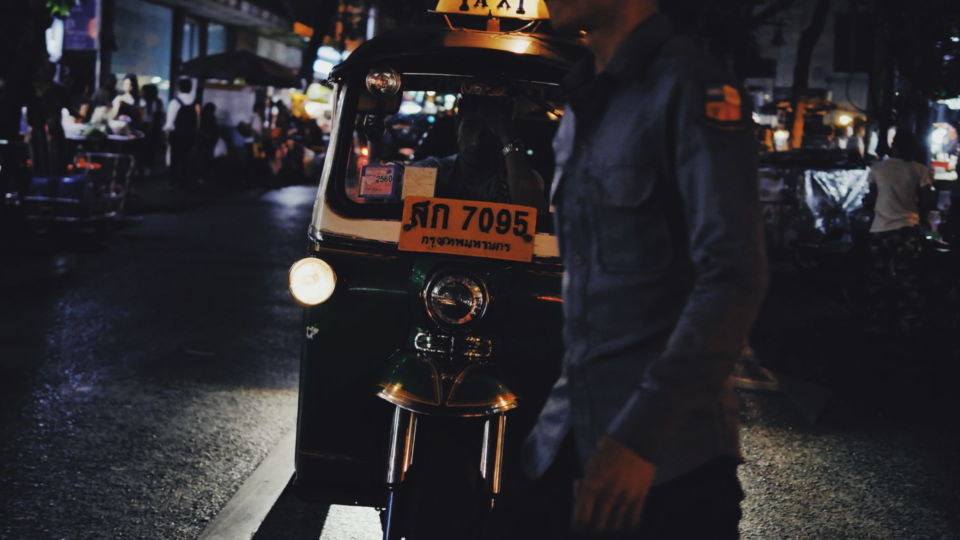“This? No. This? No.” Ann Pronchon, 38, stands on a Thonglor crosswalk waiting for cars to let her cross to a Burger King on the other side of the pedestrian heavy street. Ann can make her way across the street in a mad dash or wait for a car to stop.
After about half a minute, one finally does. “Just a few days and it is the same again.”
Bangkok was more careful about its pedestrians after the tragic death in January of 33-year-old Waraluck “Dr. Kratai” Supawatjariyakul, who was struck by a motorcycle cop at a crosswalk and killed. Condemnations soon followed — of the police, of the driving test system, drivers, invisible crosswalks. But now it’s March, and so little has changed.
“We don’t have a clear solution yet as everything is still in progress,” said Thanaphong Jinvong, manager of Road Safety Thailand.
The solutions to Thailand’s road safety issues are staring from the mirror
“Traffic lights are needed to reduce speeds so people have enough time to cross without being in a hurry. On the other hand, pedestrians will have to speed up, so it works both ways.”
The social media storm over the high-profile accident caused, anecdotally, more cars and motorcycles to obey pedestrian etiquette, but after just a few short weeks the crosswalks of Bangkok are far from safe.
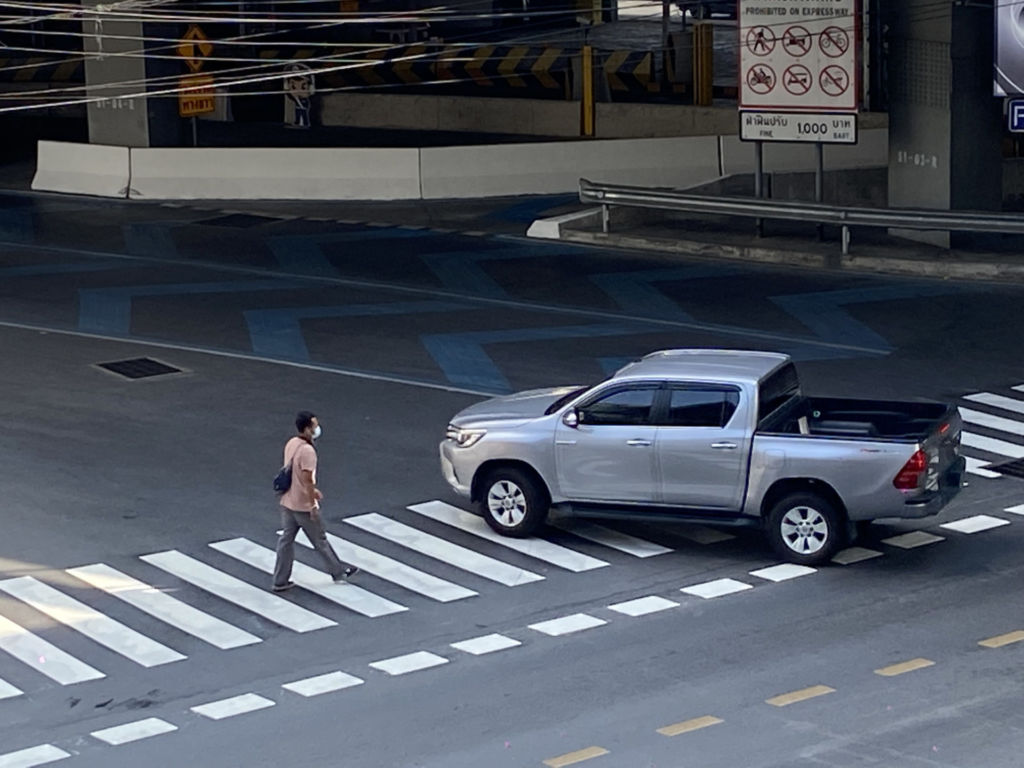
A study by ThaiHealth and the ThaiRoads Foundation found that 90% of motorcycles and cars failed to stop at crossings just several days after her death. The authorities tried a number of response measures, including literally painting over the problem at zebra crossings. Bangkok officials also announced they would install traffic lights and surveillance cameras at 100 crosswalks over the course of a month. Violators would be charged a fine of THB1,000 to THB4,000.
“We have AI surveillance cameras installed to capture people who are breaking the rules,” Thanaphong said. “Even though we created the fine, I don’t see any actions being taken when the rules are broken. We still have to figure out what works and what doesn’t.”
Heavy fines alone won’t do the job. Pedestrians of the city face stolen city planning flubs and crumbling sidewalks and infrastructure. Worse yet, for the elderly and the disabled certain areas of the city are impassable. “There should be more safety precautions for pedestrians. In fact, more people should adapt to walking rather than using vehicles,” said Adisak Guntamueanglee of GoodWalk Thailand, an organization that strives to make Thailand more walkable.
“There should be stricter restrictions to follow the traffic light signals as most riders completely ignore them.”
Solutions remain elusive. Everything from the width of the sidewalk to maintenance and funding present problems.
“It all starts with the design of the road,” Adisak says.
6 reasons why the pavements are still dangerous
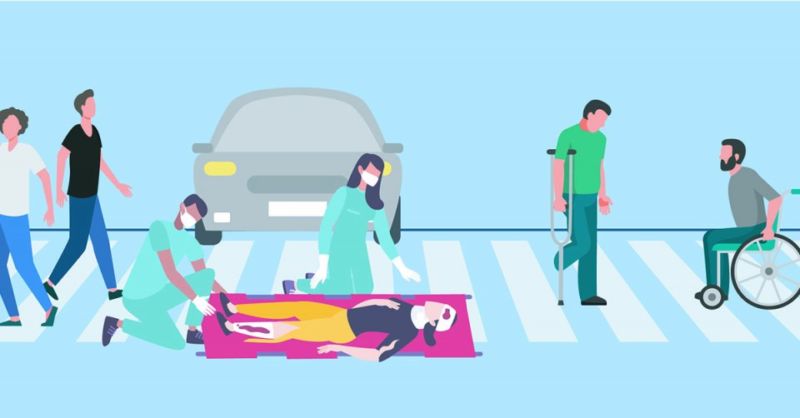
Beware the zebra
In the aftermath of the doctor’s death, the immediate culprits were the crosswalks, or zebra crossings. In theory, crosswalks are where cars and motorcycles are meant to slow and stop for pedestrians — pure fantasy in Bangkok. Despite this, police and authorities are making it their mission to restore more than 2,000 of 12,000 zebra crossings, which they claim are in disrepair.
Human traps
It’s like something out of a cartoon — falling into a manhole. But this event is more dangerous and more common than many expect, as was the case of an office employee in front of the Ratchadapisek MRT who fell a full three meters into sewage in 2019. A similar incident in Chonburi ended in the death of a four-year-old girl. Problems with infrastructure are often more common in lower-income neighborhoods, but everyone in Bangkok knows to keep one eye on the ground when they walk.
Motorcycles
Pedestrians may make up 8% of Thailand’s traffic deaths but those on two wheels make up the majority. The Bangkok Metropolitan Administration announced plans earlier this month to build designated motorcycle lanes, to which a caustic city replied, “They already have one, it’s called the sidewalk.” In February a man tried to slow down the bikes — including with well-placed buckets of water — and was threatened with an ice pick for his trouble.
Sidewalk jungle
Up, down, jump, tread softly — Bangkok’s sidewalks are notorious for their Escherian design and poor upkeep. Quite apart from being useless to people with disabilities, high foot traffic areas are often crowded with hawkers and street stalls. Oh, and pedestrians get to play minesweeper every time it rains. The only thing that seems to manage on Bangkok’s sidewalks are the scooters.
Concrete rain
Holes below, falling sky above. Bangkok’s construction sites can be deadly, and construction near major pedestrian areas puts those on foot in danger. Falling cement, collapsing pillars, and crumbling cranes, all put commuters in danger. Already this year, a crane fell and crushed a pedestrian in Thonglor.
It’s electric
According to none other than the city’s favorite tourism expert, Russell Crowe, Bangkok is a mess of chaotic, tangled cables. Sure, it’s a beautiful mess, but it’s also a danger — as was the case with an unlucky lottery ticket seller in Lat Krabang who was electrocuted. The city is on a never ending chore to clear the nests of wires, most recently with the Prime Minister himself claiming he was working with the National Telecommunications Commission to fix the problem.
What pedestrians say about their streets
Narinintarakul “Nin” Na Ayuthaya is the photographer behind the 70young-taew Instagram in which he chronicles his mother, Archara “Taew” Na Ayuthaya, and her battle with dementia. Nin shares his thoughts on making the roads better for him and his mother.
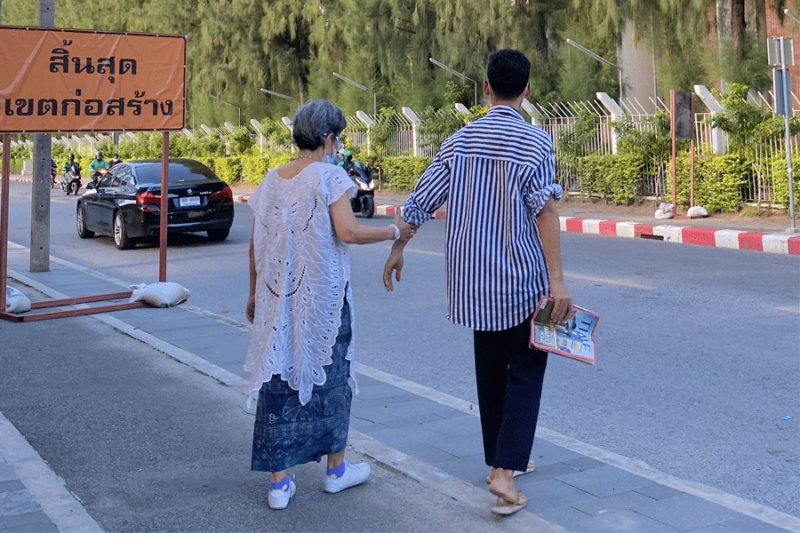
“Putting the uneven walkways aside, there aren’t enough trees for our streets. My mom, despite reaching 71 this year, loves to walk and excels at it. But the walkways are too hot as we don’t have enough tree cover. I understand that they needed to cut all the trees back so they don’t get in the way of [electric] wires. But now they are planning to put all those wires underground, Bangkok’s officials should get more serious about replanting trees that would lend a beautiful backdrop to the city. By trees, I don’t mean the short bushes or small trees that we can find along the pavement. [The government] should consider the larger and more beautiful ones just like other countries. As a photographer, I believe if we plant more trees and add more benches along the street, they could be beautiful landmarks for both locals and tourists alike. They’d be an investment in the long run.”
Nalutporn “Noo” Krairiksh is a journalist and founder of the disability platform Thisable.me. She has used her wheelchair to explore places like Bangkok’s coming Chong Nonsi Canal Park and Victory Monument.
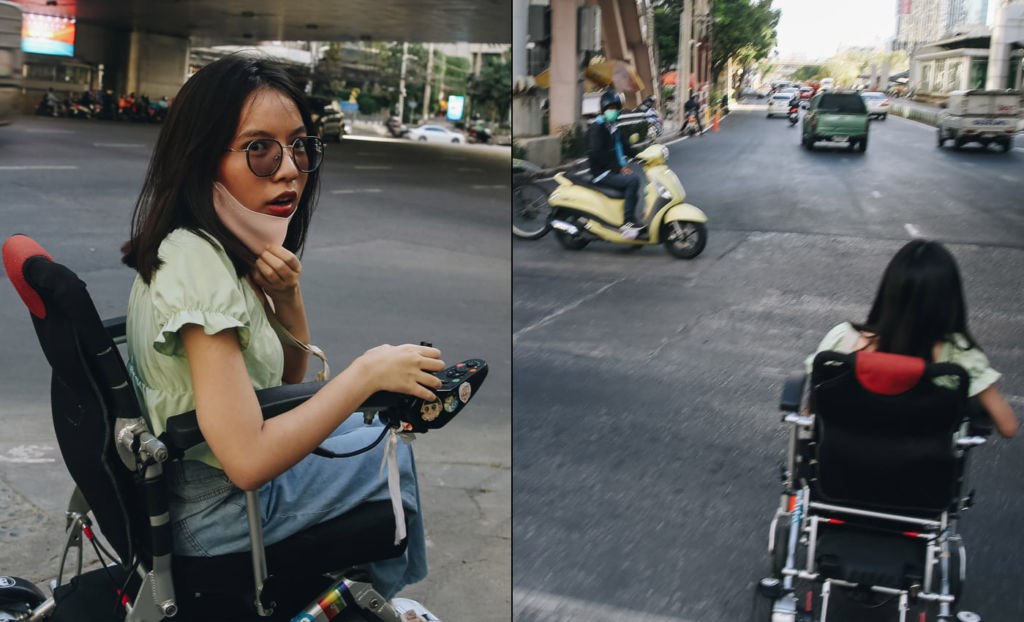
“I don’t think our walkways are friendly to anyone. When you see people falling into manholes or getting hit while walking on the streets, mostly the victims are ordinary people, not people with disabilities—well, we can’t even access them. When I wrote about my wheelchair experience roaming Chong Nonsi Canal Park or Victory Monument, people asked me why I didn’t use skywalks or overpasses. Those are options, but they shouldn’t be necessities. In fact, a lot more people, not just people with disabilities, cannot use overpasses. There are elderly people who have to climb those steep stairs, street vendors who have to carry heavy things to sell, or those with heavy luggage. Our main, fundamental walkways should be the pavements. They should be smooth, large, safe, and practical, and they shouldn’t make anyone feel disconnected. The change I wish to see is increased accessibility that lets [people with disabilities] live our life without help from others. Once people with extreme difficulties like those with wheelchairs can roam the streets with ease, everyone can enjoy the same safety and convenience. Everyone benefits from more accessibility.”
